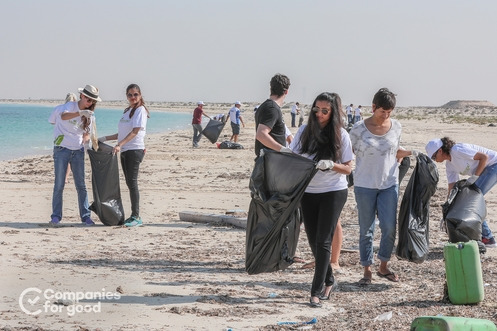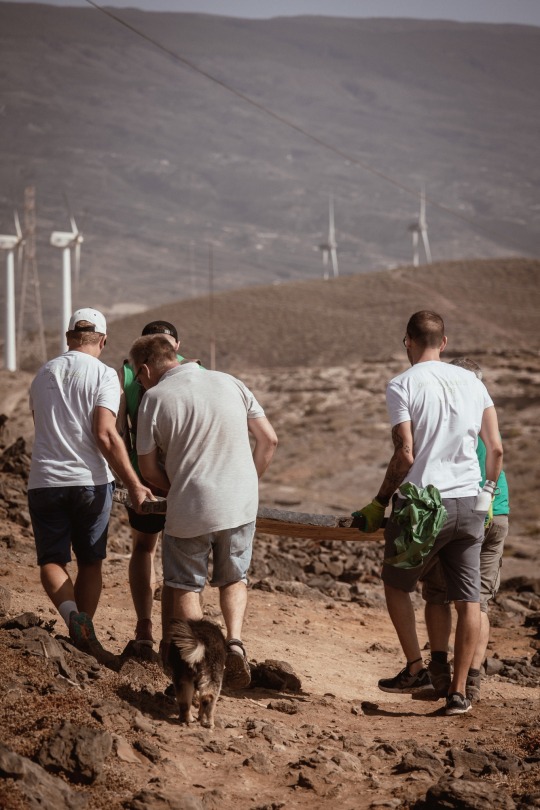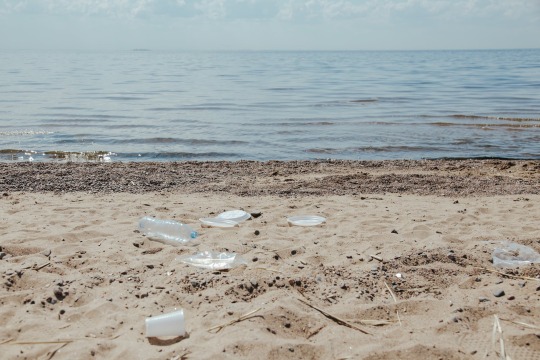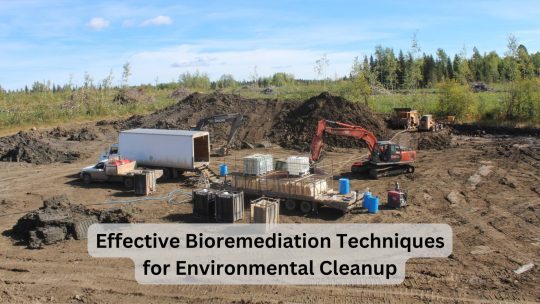#Sustainable cleanup
Text
Earth Day 2023
Let’s celebrate the 2023 Earth Day!
This year, we rally behind the theme “Invest In Our Planet”, which highlights the importance of dedicating our time, resources, and energy to solving climate change and other environmental issues.
Investing in our planet is necessary to protect it and the best way to pave a path toward a prosperous future.
Every April 22nd, stakeholders of all backgrounds…

View On WordPress
#Activism#Causes#climate change#Climate Literacy#Earth Day#Earth Day Every Day#environment#Fashion For The Earth#Green Cities#Invest In Our Planet#It&039;s Not A Day It&039;s A Movement#Raffaello Palandri#Sustainability#Take Action#The Canopy Project#The Great Global Cleanup#Vote Earth
10 notes
·
View notes
Text

International Plastic Bag Free Day | Plastics give a helping hand, but they are polluting our land!
This day symbolizes the significance of taking small steps in refusing plastic bags, which can contribute to monumental leaps for our beautiful, clean, and green environment. By choosing reusable alternatives and raising awareness about the harmful effects of plastic bags, we empower ourselves to make a positive impact.
International Plastic Bag Free Day
DPS Kamptee Road Nagpur
#Plastic bag pollution#Single-use plastics#Environmental impact#Sustainable alternatives#Reduce plastic waste#Reusable bags#Plastic bag bans#Plastic bag recycling#Plastic bag awareness#Eco-friendly choices#Plastic bag legislation#Plastic-free living#Ocean conservation#Marine litter#Plastic bag consumption#Waste management#Green initiatives#Plastic pollution prevention#Community cleanups#Global environmental awareness
3 notes
·
View notes
Text

Unraveling the Depths of Bioaugmentation and Biostimulation: A Comprehensive Comparison
Introduction:
If you've ever delved into the field of environmental biotechnology, you've likely stumbled across the terms "bioaugmentation" and "biostimulation". These sophisticated approaches to environmental remediation are both aimed at enhancing natural processes to treat contamination. But what exactly distinguishes one from the other? In this article, we will delve into the specifics of Bioaugmentation vs Biostimulation, breaking down their definitions, applications, and key differences.
Understanding Bioaugmentation:
Bioaugmentation, in its simplest form, is the introduction of a group of natural microbial strains or a genetically engineered variant into an environment to enhance the rate of pollutant degradation. These microbial strains, often referred to as 'augments', are known for their specialized ability to degrade contaminants that the existing microbial community cannot effectively handle. This technique is frequently employed to address the contamination of soil and water bodies with organic pollutants such as oil spills and certain types of industrial waste.
Diving into Biostimulation:
On the other hand, biostimulation involves the stimulation of indigenous microbial communities already present in the environment by providing nutrients, electron acceptors, or substrates that enhance their activity. Unlike bioaugmentation that adds new organisms to an ecosystem, biostimulation works with the existing microbial population, encouraging their growth and pollutant degradation capabilities. Often used in environmental cleanup efforts, biostimulation can enhance the breakdown of a broad range of pollutants, including petroleum hydrocarbons and heavy metals.
Bioaugmentation Vs Biostimulation: A Comparative Study:
Now that we understand the fundamentals of both processes, it's time to compare them head-to-head.
Techniques Involved: While bioaugmentation is about introducing specific microbial strains to boost pollutant degradation, biostimulation works by providing necessary nutrients or substrates to stimulate the indigenous microbial population.
Scope of Application: Both techniques are used in environmental remediation, especially for soil and groundwater. Bioaugmentation has a slight edge in cases where specific contaminants require particular microbial strains for degradation. Biostimulation, however, is often favored for broader applications, given that it enhances the overall microbial activity and not just that of specific strains.
Economic Aspects: Bioaugmentation requires the cultivation and addition of specific microbial strains, which can be costly and technically demanding. On the contrary, biostimulation usually involves adding relatively inexpensive nutrients or substrates, making it a more economically feasible option in many cases.
Environmental Impact: Bioaugmentation involves adding new organisms, which raises concerns about the impact on the existing ecosystem and the potential for creating imbalances. Biostimulation, working with existing microbial communities, is generally viewed as having a less disruptive impact on ecosystem balance.
Effectiveness: Both techniques have proven effective in various scenarios, but their success heavily depends on site-specific conditions. For instance, bioaugmentation's effectiveness might be hindered by the inability of the added microbes to survive in the new environment. Biostimulation's success, on the other hand, could be limited by the potential growth of undesired microbial communities.
Conclusion:
Bioaugmentation and biostimulation, though conceptually distinct, share a common goal: to utilize biological processes for environmental remediation. Choosing between them demands a clear understanding of the contamination at hand, the existing microbial community, and the economic and environmental implications of each approach. As scientists continue to explore these fascinating techniques, our ability to heal the environment using nature's own tools will only continue to improve.
#Bioaugmentation#Biostimulation#Bioremediation technologies#Environmental Remediation#Pollution control methods#Bioaugmentation vs Biostimulation#Benefits of bioaugmentation#Benefits of biostimulation#Bioaugmentation in habitat restoration#Biostimulation for pollution control#Limitations of bioaugmentation#Limitations of biostimulation#Bioaugmentation-assisted biostimulation#Microbial bioremediation#Sustainable environmental practices#Choosing between bioaugmentation and biostimulation#Understanding bioaugmentation#Understanding biostimulation#Industrial waste management#Oil spill cleanup techniques
5 notes
·
View notes
Text
Fairmont Banff Springs
sustainable cuisine to bring in the highest quality ingredients and sources more than 75% of our products from Alberta and other Canadian provinces.

For Water conservation has taken large steps to cease irrigating and has saved near 1.5 million gallons of water annually.

By introducing LED light bulbs throughout the hotel. Since 2015, electricity use has decreased by 8% thanks to the LED installations

Fairmont Banff Springs Hotel performs an annual cleanup of the property and surrounding community to ensure it is sparkling like mother nature intended.

The hotel has implemented zero waste recipes in our kitchens and installed the Leanpathsystem, a software that measures food waste in kitchens

1 note
·
View note
Text

0 notes
Text
"That LocalCoho is able to raise these complex creatures on land is a radical change, one poised to turn an industry rife with environmental concerns on its head."
0 notes
Text

The Global Environmental Remediation Market size
Discover the current size and trends in the Global Environmental Remediation Market. Stay updated on the latest developments in environmental cleanup solutions and technologies.
#Pollution Control Services market#Groundwater Cleanup Methods market#Contaminated Site Remediation market#Hazardous Waste Management market#Air Quality Improvement Solutions market#Ecosystem Restoration Projects market#Environmental Consulting Firms market#Sustainable Remediation Practices market#Bioremediation Techniques market
0 notes
Text
The Best Practices for Safe and Effective Beach Clean-up in Dubai

Introduction
The world is in crisis — socially and environmentally. Companies for Good (CFG) recognizes the urgent need for collective action to address these issues. One way businesses can make a positive impact is by participating in beach clean-up initiatives. In this guide, we will explore the best practices for safe and effective beach clean-ups in Dubai, highlighting how CFG’s mission aligns with the goals of preserving our coastal environments.
Preparation and Planning
Set Clear Objectives
CFG encourages businesses to set clear objectives when participating in beach clean-ups. This may include showcasing their commitment to environmental stewardship, building stronger community ties, or raising awareness about the importance of corporate social responsibility (CSR activities).
Assemble Your Team
Businesses affiliated with CFG can engage employees, clients, and partners to form a united team focused on making a difference. By involving stakeholders, companies can amplify their impact on the community.
Secure Necessary Permits
CFG offers guidance on navigating the legal aspects of beach clean-ups in Dubai. We help businesses obtain the necessary permits, ensuring a smooth and compliant operation.
Safety First
Safety Briefing
CFG emphasizes the safety of all participants. We provide resources and recommendations for conducting safety briefings, helping businesses mitigate risks, and prioritizing the well-being of their teams.
Proper Attire
Our platform advises companies on the appropriate attire and gear to keep participants safe during clean-up activities. We believe that safety should always come first.
Hydration and Sun Protection
Dubai’s scorching heat requires special attention to hydration and sun protection. CFG encourages businesses to provide ample water and sunscreen to ensure the health and comfort of volunteers.
The Clean-up Process
Equipment and Supplies
CFG assists businesses in sourcing the necessary cleaning equipment and supplies, making the logistics of beach clean-ups hassle-free. We facilitate the procurement of trash bags, buckets, grabbers, and first-aid kits.
Sorting and Recycling
Our platform encourages responsible waste management. We guide businesses in implementing efficient sorting and recycling systems during clean-ups, minimizing the environmental footprint of the event.
Data Collection
CFG emphasizes the importance of data collection. We help businesses document the types and quantities of litter collected, enabling them to showcase their impact and commitment to sustainability.
Beach Restoration
For businesses looking to go the extra mile, CFG connects them with experts in beach restoration. This ensures that any damage or erosion caused by litter accumulation is addressed effectively.
Post-Clean-up
Waste Disposal
CFG offers guidance on responsible waste disposal in alignment with Dubai’s waste management guidelines. We help businesses coordinate with local authorities to ensure that waste is disposed of correctly.
Thank Your Volunteers
Acknowledging the efforts of volunteers is essential. CFG suggests ways for businesses to express gratitude, fostering a sense of community and encouraging continued involvement.
Raising Awareness
Social Media and Outreach
CFG encourages businesses to share the results of their clean-up efforts on social media and through local media outlets. This not only raises awareness but also showcases a company’s commitment to being a force for good.
Educational Programs
To deepen their impact, companies can organize educational programs and workshops. CFG supports these initiatives by providing resources and expertise, helping businesses inform the community about the importance of beach conservation.
Conclusion
As the world faces social and environmental challenges, CFG believes that businesses can play a crucial role in driving positive change. Engaging in beach clean-ups in Dubai is a meaningful way for companies to demonstrate their commitment to making a difference. By following these best practices, CFG and its affiliated businesses ensure that their efforts are safe, effective, and impactful.
1 note
·
View note
Text
Sailing towards Sustainability: Recycled Ocean Plastics Market Dynamics
The global recycled ocean plastics market size is expected to reach USD 2.91 billion by 2030. Growing marine plastic waste is anticipated to drive the growth of the industry over the forecast period. According to a report by United Nations Environment Programme (UNEP), plastic accounts for 85% of all marine litter. By 2040, 23 to 37 million metric tons of waste will be added into the ocean per year which will triple the amount of plastic waste in oceans.

Gain deeper insights on the market and receive your free copy with TOC now @: Recycled Ocean Plastics Market Report
In oceans, plastic waste injures and kills seabirds, fish, and marine mammals because of ingestion, suffocation, starvation, infection, drowning, and entanglement. The sea turtles are the most affected because of plastic pollution because of entanglement in ghost gear and suffocation. The human population is also at risk as plastics enter the human body through the food chain. Microplastics can also be inhaled when suspended in the air. In water sources, plastic pollution can cause hormonal changes, reproductive abnormalities, developmental disorders, and even cancer. It also has significant consequences for the global economy. It can also lead to a rise in illegal international and domestic waste disposal. It is estimated that by 2050 there will be more plastic waste in the oceans than fish.
The Asia Pacific region accounts for over 80% of all the plastic waste entering the ocean. This is because of waste mismanagement, and the lack of waste collection and processing in several countries in the region. Recycling comprises only a small percentage of waste disposal methods, while open dumping is the most-used method to dispose of waste in Southeast Asia. Rivers are a major source of marine waste, and rivers in South and Southeast Asia constitute the largest sources of ocean plastic waste worldwide. For example, the river Pasig in the Philippines is the most polluted and is the major source of plastic pollution in Asia.
#Recycled Ocean Plastics#Ocean Sustainability#Plastic Free Seas#Sustainable Materials#Plastic Pollution Solution#Ocean Conservation#Marine Plastic#Sea Cleanup#Plastic Waste#Circular Economy#Ocean Friendly#Sustainable Packaging#Plastic Free World#Ocean Protection#Green Technology#Recycled Plastic Products#Plastic Reduction#Eco Friendly Choices#Plastic Alternatives#Ocean Awareness
1 note
·
View note
Text




Beach Clean Up with CanaryGreen.org #playaPoris #canaryislands #spain #sustainabletourism
0 notes
Text
Ban These Five Single-Use Plastics for Cleaner Oceans, Study Urges
In our quest to combat plastic pollution and protect our oceans, the need to take action against single-use plastics has never been more pressing. Recent findings from the Ocean Conservancy shed light on the significant impact that banning five specific items could have on reducing plastic waste. By outlawing certain single-use items, we have the potential to make a remarkable dent in the 1.4…

View On WordPress
#biodegradable#climate change#cloth bags#eco-friendly#ocean cleanup#ocean pollution#paper straws#plastic alternative#plastic alternatives#plastic pollution#plastic waste#plastic-free#single-use plastics#sustainable packaging
0 notes
Text

Bioaugmentation Versus Biostimulation: Decoding Key Environmental Bioremediation Strategies
Introduction
Bioaugmentation and biostimulation stand as revolutionary strategies in the realm of environmental biotechnology. How do these terms define themselves and what sets them apart?
An In-Depth Look into Bioaugmentation and Biostimulation
Bioaugmentation and biostimulation, both employing living organisms, play pivotal roles in purifying polluted environments, be it soil or water. However, their modus operandi in achieving this feat greatly varies.
Delving into Bioaugmentation
Let's first navigate through the fascinating world of bioaugmentation.
Bioaugmentation Explained: Definition and Procedure
Bioaugmentation involves introducing specially cultured microorganisms to a polluted environment to expedite the degradation of pollutants. Think of it as adding specific ingredients (including microbes) into a bread recipe – by controlling the components, environmental experts can predict the outcome.
Why Choose Bioaugmentation: Key Advantages
Bioaugmentation opens up the possibility to degrade a diverse array of pollutants, thereby enhancing the pace of pollution degradation.
Bioaugmentation: Identifying the Challenges
Despite its benefits, bioaugmentation faces certain hurdles. The primary drawback is the higher cost involved in introducing a culture compared to simply adding nutrients.
Unfolding the Concept of Biostimulation
Now, let's shift our focus to biostimulation.
Unraveling Biostimulation
Biostimulation is a process where nutrients and other substances are added to boost the growth of native microorganisms, thereby aiding in the degradation of pollutants. It's akin to providing an energy drink to the local cleanup team!
Why Opt for Biostimulation: Core Advantages
Biostimulation capitalizes on existing microbial communities, causes less disturbance to the ecosystem, and proves efficient in treating large-scale contaminations.
Understanding Biostimulation Limitations
However, biostimulation has its drawbacks, such as unpredictable outcomes and a longer duration for the degradation process compared to bioaugmentation.
Bioaugmentation and Biostimulation: A Side by Side Comparison
Next, we draw a comparison between these two strategies.
Common Ground
Both strategies share a common goal - degrading pollutants through microorganisms. Moreover, they are generally more eco-friendly and sustainable than their chemical counterparts.
Crucial Distinctions
The fundamental distinction lies in their respective strategies - bioaugmentation introduces new microorganisms, while biostimulation boosts the activity of existing ones.
Case Studies: Witnessing Bioaugmentation and Biostimulation at Work
Imagine an oil spill scenario. Here, bioaugmentation might involve introducing oil-consuming bacteria, while biostimulation might add nutrients to spur the growth of local oil-consuming bacteria.
Deciding Between Bioaugmentation and Biostimulation
Selecting between these two strategies hinges on multiple factors, including the type of pollution, site characteristics, and available resources.
Looking Ahead: The Future of Bioaugmentation and Biostimulation
As the quest for sustainable and effective pollution control continues, the significance of both bioaugmentation and biostimulation is set to rise.
Conclusion
Although different in their approach, both bioaugmentation and biostimulation serve as instrumental tools in combating environmental pollution. Comprehending these differences is integral for informed decision-making in the field of environmental bioremediation.
#Bioaugmentation#Biostimulation#Environmental Bioremediation#Pollution Control#Bioremediation Techniques#Sustainable Pollution Cleanup#Bioaugmentation vs Biostimulation#Microbial Pollution Degradation#Biotechnology Solutions#Eco-friendly Remediation Techniques
0 notes
Text
A Memorandum of Understanding (MoU) to collaborate on eliminating plastic pollution in oceans and rivers around the globe.
The United Nations Development Programme (UNDP) and The Ocean Cleanup today signed a Memorandum of Understanding (MoU) to collaborate on eliminating plastic pollution in oceans and rivers around the globe.
The goal of the partnership is to reduce leakages of plastics into marine ecosystems by boosting policies and behavior change aimed at advancing sound plastic waste management systems and reducing overall plastic pollution, and accelerating the deployment of interception technologies in rivers to end marine plastic pollution.
Plastic pollution poses an existential threat to the health of the world’s oceans and the billions of people who depend on marine resources for food and income. Partnerships play a critical role in addressing this complex global challenge.
“Eliminating plastic pollution in all its forms is key to protecting human and planetary health and safeguarding sustainable development,” said Achim Steiner, UNDP Administrator. “This alliance is an important step to curb the flow of plastic pollution into oceans and rivers but also to raise awareness, support sound policy making, and trigger behavioral change along the entire plastic value chain.”
“After our valuable experience working with local UNDP teams to tackle riverine plastic pollution in the Dominican Republic, we are excited to partner with UNDP to further promote sustainable ocean health,” said The Ocean Cleanup founder and CEO Boyan Slat. “We believe that, through this alliance, we can help accelerate the deployment of our technologies to eliminate plastics from the oceans and rivers, as well as support broader policies aimed at waste management and reducing plastic pollution.”
This new partnership comes at a critical time as negotiations for an international legally binding instrument on plastic pollution, including in the marine environment, are taking shape.
#marine environment#sustainable ocean health#eliminate plastics#oceans and rivers#behavioral change#plastic value chain#Memorandum of Understanding (MoU)#United Nations Development Programme (UNDP)#ocean cleanup
0 notes
Text

Effective Bioremediation Techniques: A Sustainable Solution for Environmental Cleanup
Bioremediation is a sustainable and cost-effective solution to environmental pollution, using living organisms such as bacteria and fungi to degrade pollutants into harmless compounds. There are various bioremediation techniques, including in situ (at the site of pollution) and ex situ (removing contaminants to treat elsewhere). Other methods include bioventing, biosparging, and use of bioreactors to promote the natural degradation of pollutants.
These techniques can handle a wide array of pollution types including petroleum, heavy metal, pesticide contamination, industrial waste, and landfill leachate. Benefits of bioremediation include its sustainability, cost-effectiveness, versatility, and non-invasiveness.
One company leading the way in bioremediation is Delta Remediation, based in Alberta, Canada. They specialize in applying these techniques to sites polluted with hydrocarbons, pesticides, and industrial waste, and have expanded their operations to Nigeria and Kenya.
Bioremediation thus offers a promising method for environmental cleanup, being both eco-friendly and adaptable to diverse environments. Companies like Delta Remediation are pioneering in this sector, making significant contributions to environmental health.
#Bioremediation techniques#Environmental cleanup#Sustainable solutions#Microorganisms in bioremediation#In situ bioremediation#Ex situ bioremediation#Bioventing for soil remediation#Biosparging for groundwater cleanup#Bioreactors in environmental remediation#Petroleum contamination cleanup#Heavy metal pollution remediation#Pesticide degradation#Industrial waste treatment#Landfill leachate remediation#Benefits of bioremediation#Delta Remediation#Bioremediation company#Alberta bioremediation services#Oil and gas industry cleanup#Hydrocarbon and pesticide decontamination
0 notes
Text

0 notes
Text
while everyone's rightfully talking about oppenheimer and its flaws regarding the erasure of japanese and native american voices regarding nuclear testing and detonations, i'd like to bring up the fact that pacific islanders have also been severely impacted by nuclear testing under the pacific proving grounds, a name given by the US to a number of sites in the pacific that were designated for testing nuclear weapons after the second world war, at least 318 of which were dropped on our ancestral homes and people. i would like if more people talked about this.
important sections are bolded for ease of reading. i would appreciate this being reblogged since it's a bit alarming how few people know about this.
--
in 1946, the indigenous peoples of pikinni (the bikini atoll) were forcibly relocated off of their islands so that nuclear tests could be run on the atoll. at least 23 nuclear bombs were detonated on this inhabited island chain, including 20 hydrogen bombs. many pasifika were irreversibly irradiated, all of them were starved during multiple forced relocations, and the island chain is still unsafe to live on despite multiple cleanup attempts. there are several craters visible from space that were left on the atoll from nuclear testing.
the forced relocation was to several different small and previously uninhabited islands over several decades, none of which were able to sustain traditional lifestyles which directly lead to further starvation and loss of culture and identity. there is a reason that pacific islanders choose specific islands to inhabit including access to fresh water, food, shelter, cloth and fibre, climate, etc. and obviously none of these reasons were taken into account during the displacements.
200 pikinni were eventually moved back to the atoll in the 1970s but dangerous levels of strontium-90 were found in drinking water in 1978 and the inhabitants were found to have abnormally high levels of caesium-137 in their bodies.
--
i'm going to put the rest of this post under a readmore to improve the chances of this being reblogged by the general public. i would recommend you read the entirety of the post since it really isn't long and goes into detail about, say, entire islands being fully, utterly destroyed. like, wiped off of the map. without exaggeration, entire islands were disintegrated.
--
as i just mentioned, ānewetak (the eniwetok atoll) was bombed so violently that an entire island, āllokļap, was permanently and completely destroyed. an entire island. it's just GONE. the world's first hydrogen bomb was tested on this island. the crater is visibly larger than any of the islands next to it, more than a mile in diameter and roughly fifteen storeys deep. the hydrogen bomb released roughly 700 times the energy released during the bombing of hiroshima. this would, of course, be later outdone by other hydrogen bombs dropped on the pacific, reaching over 1000 times the energy released.
one attempt to clean up the waste on ānewetak was the construction of a large ~380ft dome, colloquially known as the tomb, on runit island. the island has been essentially turned into a nuclear waste dump where several other islands of ānewetak have moved irradiated soil to and, due to climate change, rising seawater is beginning to seep into the dome, causing nuclear waste to leak out. along with this, if a large typhoon were to hit the dome, there would be a catastrophic failure followed by a leak of nuclear waste into the surrounding land, drinking water, and ocean. the tomb was built haphazardly and quickly to cut costs.
hey, though, there's a plus side! the water in the lagoon and the soil surrounding the tomb is far more radioactive than the currently contained radioactive waste. a typhoon wouldn't cause (much) worse irradiation than the locals and ocean already currently experience, anyway! it's already gone to shit! and who cares, right, the only ""concern"" is that it will just further poison the drinking water of the locals with radioactive materials. this can just be handwaved off as a nonissue, i guess. /s
--
at least 36 bombs were detonated in the general vicinity of kiritimati (christmas island) and johnson atoll. while johnson atoll has seemingly never been inhabited by polynesians, kiritimati was used intermittently by polynesians (and later on, micronesians) for several hundred years. many islands in the pacific were inhabited seasonally and likewise many pacific islanders should be classified as nomadic but it has always been convenient for the goal of white supremacy and imperalism to claim that semi-inhabited areas are completely uninhabited, claimable pieces of terra nullius.
regardless of the current lack of inhabitants on these islands, the nuclear detonations have caused widespread ecological damage to otherwise delicate island ecosystems and have further spread nuclear fallout across the entirety of the pacific ocean.
--
while the marshall islands, micronesia, and the surrounding areas of melanesia and polynesia were (and still are) by far the worst affected by these atrocities, the entirety of the pacific has been irradiated to some extent due to ocean/wind currents freely spreading nuclear fallout through the water and air. all in all, at least 318 nuclear bombs were detonated across the pacific. i say "at least" because these are just the events that have been declassified and frankly? i wouldn't be shocked to find out they didn't stop there.
please don't leave the atomic destruction of the pacific out of this conversation. we've been displaced, irradiated, murdered, poisoned, and otherwise mass exterminated by nuclear testing on purpose and we are still suffering because of it. many of us have radiation poisoning, many of us have no safe ancestral home anymore. i cannot fucking state this enough, ISLANDS WERE DISINTEGRATED INTO NONEXISTENCE.
look, this isn't blaming people for not talking about us or knowing the extent of these issues, but it's... insidiously ironic that i haven't seen a single post that even mentions pacific islanders in a conversation about indigenous voices/voices of colour being ignored when it comes to nuclear tests and the devastation they've caused.
#ask to tag. i understand this is heavy and i've tried to tag accordingly#oppenheimer#oppenheimer 2023#pasifika#micronesian#melanesian#polynesian#pacific islands#indigenous#pacific ocean#pacific proving grounds#racism#imperialism#genocide#nuclear weapons#indigenous genocide#nuclear#nuclear bomb#us imperialism#displacement#nuclear imperialism
5K notes
·
View notes